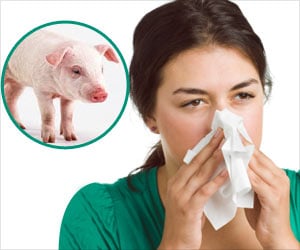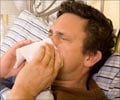A novel breath test, measuring the immune response to the H1N1 flu virus, could help to ease future vaccine shortages by identifying the people who have already been infected with the flu virus.

Research published last month claimed that over half of the people in Glasgow vaccinated during the 2009 swine flu pandemic were already infected with the flu virus, meaning they were vaccinated unnecessarily. It is thought that similar patterns would have been found throughout the UK.
These vaccinations would not have harmed the people concerned, however local health authorities would have been affected as they attempted to administer the vaccine quickly and effectively on limited supplies.
A fast-acting, non-invasive test for the virus could therefore help to avoid unnecessary vaccinations and help prioritise the people who most need the vaccines.
The researchers, from Cleveland Clinic and Syft Technologies, enrolled 11 individuals on their study of which nine were given the live attenuated H1N1 vaccine and administered the breath test on each of the following seven days.
The breath test examined exhaled nitric oxide (NO) – a biomolecule whose production has previously been linked to influenza and viral infection and has been speculated to play a beneficial role in viral clearance.
Advertisement
Of the 11 other compounds examined in the study, only one compound – isoprene - showed an elevated level, again on day three. Increased levels of isoprene, a compound produced within the body and a major constituent of exhaled breath, have been reported to reflect oxidative stress in the airways.
Advertisement
The H1N1 swine flu pandemic of 2009 affected over 214 countries and resulted in approximately 43-89 million illnesses and 8,870-18,449 deaths.
This study presents the first direct evidence of a potential test to diagnose H1N1 influenza using your breath, a concept which has already been used to diagnose and monitor asthma, check for transplant organ rejection, and to detect lung cancer and alcohol intoxication.
If a fast, easy, non-invasive breath test is to be mass-produced, the researchers state that further work will need to identify other compounds associated with an immune response that were only touched upon in this study, as well as identifying the exact mechanism underlying the increase in exhaled NO as a result of the live vaccine.
One of the study's authors Professor Raed Dweik said, "This study adds to the growing evidence for the utility of breath analysis in medical diagnostics. More work still needs to be done, however, to identify the specific compounds that change in response to vaccination and to find the biologic link between those compounds and the host response to the vaccine or the actual disease."
Source-Eurekalert












